The Benefits of Brushed Motors
Brushed motors are commonly used in entry-level, base version, and vintage-style RC vehicles. However, just because they’re fairly commonplace doesn’t mean that everyone likes them: in fact, most RC enthusiasts prefer brushless motors instead! Which motor type is “better” really depends on the specific vehicle in question, the conditions you’re using the vehicle under, and the performance you’re hoping to get out of the RC. For most people, brushless motors seem to be the way to go, but that doesn’t mean brushed motors don’t have their place. In this post, we’ll be going over a few reasons why using a brushed setup might work out for your benefit!
Brushed Motors Are Affordable
Since they use an older, simpler design, it’s almost always possible to find a brushed motor on a budget. Prices vary depending on the motor brand or the can size of the motor, but generally, a brushed motor will be cheaper than its brushless equivalent. This lower price is reflected in the retail price of a brushed RTR vs a brushless one, with the brushed version costing anywhere from 20-40% less! If you’re considering getting your first RC but don’t want to spend hundreds of dollars right from the get-go, then purchasing a brushed RC vehicle will allow you to begin your RC journey with only a minimal investment.
Of course, your RC’s motor won’t last forever and eventually will need to be replaced. By design, brushed motors produce lots of internal friction, which means that they will wear out quicker than brushless motors. You can extend the life of your brushed motor by routinely servicing it, but since brushed motors are fairly cheap, most people simply opt to replace them instead! Depending on the particular motor you’re after, you can expect to spend anywhere from $15-45 for the motor itself (in contrast, name-brand brushless motors generally run between $80-$300!).
You’re Less Likely to Strip Your Gears
Brushed motors might not have the strength or speed of their brushless counterparts, but more power isn’t always a better thing. Your RC vehicle uses a selection of internal gears to power the drivetrain, and if these gears aren’t strong enough to handle the additional power, they tend to strip out. You’ll run into this issue most often with nylon (plastic) gears, but many people manage to strip metal gears too! The quality of the metal used to make gears varies widely, which means that the only way to truly know if a gear will strip is by putting it to the test. Since a brushed motor spins at lower speeds and produces less power overall, you won’t need to worry much about stripping your gears on a regular basis. While technically still possible, stripping your gears is much more likely due to your driving habits (such as accelerating while landing a jump) than the motor itself overexerting the gearing.
You Won’t Run Into Cogging Issues
Particularly with generic or budget brushless setups, cogging can be a major issue. “Cogging” is when a sensorless brushless motor is overgeared, can’t decide if it wants to move forward or backward, and stutters as a result. Brushed motors don’t cog: they either move or they don’t! Providing instant torque from the second you pull the trigger, brushed motors are easier to maintain control at low speed, making them a popular choice within the RC crawling community.
Of course, you can still overgear a brushed motor, but the solution will usually be to either lower the gearing or switch out to a higher-turn motor. Heat is the enemy of electric motors—regardless of whether they’re brushed or brushless—so you’ll want to watch your motor temperatures. For brushed motors, you should aim for a maximum operating temperature of 180°F or less. The easiest, most accurate way to check motor temps is by using a temperature gun like the one here. If your motor is running hot, consider investing in a cooling fan!
The Wiring is Easier
Brushed motors only use two wires, whereas brushless motors use three. In sensored brushless motors, wiring them incorrectly can actually damage or completely ruin the motor. This isn’t an issue with brushed motors though: the worst thing that can happen is the vehicle runs the wrong way! You can correct this simply by either a.) switching the motor wires, or b.) using the throttle reverse switch on your controller. Since there are fewer wires to deal with, neatly arranging your RC’s wiring will be an easy task!
Brushed Setups Are Beginner-Friendly
While running 60+MPH RC cars capable of being launched off of skatepark ramps and landing without a scratch sounds amazing, it’s probably not a realistic starting point if you’re a complete beginner. Driving fast requires practice, landing properly requires skill, and the likelihood of causing damage to your RC (or injuring a person) increases the faster you’re going. RC cars powered by brushed motors might not go as fast, but they can be just as much fun!
- You won’t need to worry as much about crashing since the crashes will be relatively low-impact (although we’d still recommend trying to avoid it if possible).
- You’ll be able to get used to the handling of your vehicle, refine your driving skills, and practice on low-risk jumps.
- If you lose control of the vehicle, any damage caused will be significantly less.
So, Is a Brushed Motor Setup the Right Choice for You?
In conclusion, brushed motor setups are the ideal choice for complete beginners, enthusiasts on a budget, and those within the RC crawler/trail truck community. If you fit within any of the aforementioned categories then purchasing a brushed RC vehicle will likely be an enjoyable investment! Even if you just want a cheap car to mess around with in your backyard, brushed RCs can provide a lot of fun at a low price, making it worth having at least one model lying around. If you don’t have a brushed RC already, well, there’s no time like the present: go grab yourself one of these brushed budget-bashers today!
By Kevin Foley

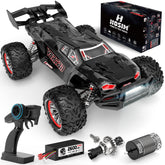

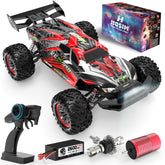

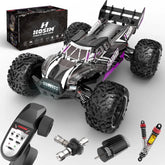

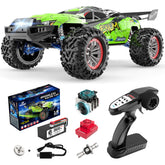

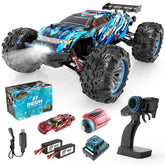











































































































Leave a comment
Please note, comments need to be approved before they are published.